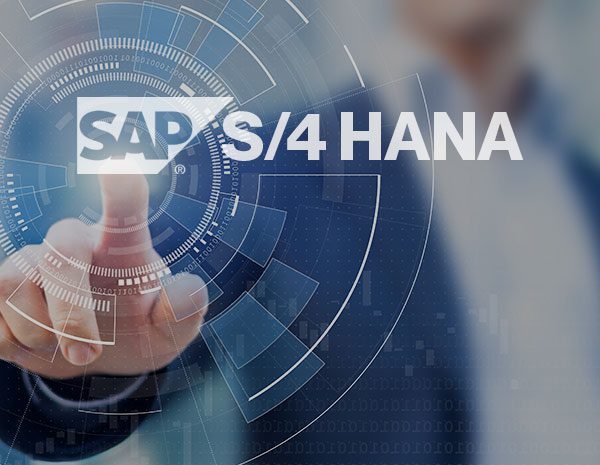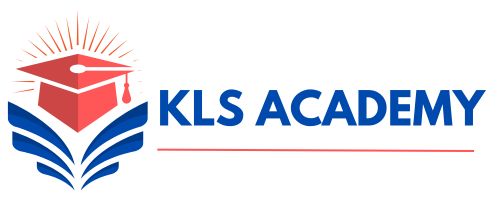SAP- S4 /HANA
ATTEND OUR DEMO

SAP S4/HANA ONLINE TRAINING
This course is like giving your business a powerful brain. SAP S/4HANA is a super smart software that helps you manage every part of your company from sales to finance.
What is SAP FICO?
SAP FICO (Finance and Controlling) is an essential module of SAP ERP (Enterprise Resource Planning) that enables businesses to manage their financial data, processes, and reporting effectively. It integrates core accounting and financial processes with other business modules in SAP, providing real-time insights and streamlining financial operations.
Key Features of SAP FICO
- Finance (FI):
- Purpose: Manages a company's financial accounting and reporting.
- Features:
- General Ledger Accounting: Tracks all financial transactions.
- Accounts Payable (AP): Manages vendor payments.
- Accounts Receivable (AR): Handles customer billing and collections.
- Asset Accounting: Tracks fixed asset transactions and depreciation.
- Bank Accounting: Manages bank transactions and reconciliation.
- Financial Statements: Generates reports like Balance Sheets and Profit & Loss Statements.
- Controlling (CO):
- Purpose: Focuses on cost management and internal financial reporting.
- Features:
- Cost Center Accounting: Monitors costs in different departments.
- Profit Center Accounting: Analyzes profit by business areas.
- Product Costing: Determines production costs and product pricing.
- Internal Orders: Tracks costs for specific projects or tasks.
- Profitability Analysis (PA): Evaluates profitability across various dimensions like regions or products.
Benefits of SAP FICO
- Real-Time Financial Insights: Provides up-to-date financial data for better decision-making.
- Integration: Links with other SAP modules like SAP MM (Materials Management), SAP SD (Sales and Distribution), and SAP PP (Production Planning).
- Regulatory Compliance: Supports adherence to local and global financial regulations.
- Customizable Solutions: Flexible configuration to meet industry-specific requirements.
- Global Scalability: Supports multiple currencies, languages, and tax laws for multinational organizations.
Lakshmana Swamy.K
Experience Summary
- 14+ years of expertise in Accounting, Finance, and Costing with proven skills in Financial and Business Analysis.
- 18+ years of extensive experience in SAP FICO and SAP S/4HANA modules.
- A passionate and dedicated professional with a strong work ethic and a results-driven approach.
- 18+ years of training experience in SAP FICO and SAP S/4HANA modules, catering to both corporate and individual learners.
Corporate Training Experience
- Conducted SAP FICO training for KTM, Dubai from February 9, 2017, to February 19, 2017.
- Delivered SAP FICO training to business users of GMG (Gulf Marketing Group), Dubai, from March 16, 2017, to April 2, 2017.
Online Training Experience
- 8+ years of providing online SAP FICO training to international students from UK, USA, and Tanzania via video conferencing platforms.
- Successfully trained:
- 17 batches of students from the UK.
- 150 batches of students from the USA.
- 2 batches of students from Tanzania.
- 400+ batches of students from India.
Introduction to SAP R/3
- Introduction to ERP, Advantages of SAP over other ERP Packages
- Introduction to SAP R/3 FICO
Financial Accounting Basic Settings:
- Definition of company
- Definition of company code
- Assignment of company to company code
- Definition of business area
- Definition of fiscal year variant
- Year dependent fiscal year
- Year independent fiscal years
- Short end fiscal years
- Assignment of fiscal year variant to company code
- Creation of chart of Accounts
- Defining Accounts Groups
- Defining Retained Earnings Account
- Definition of posting period variant
- Assignment of posting period variant to company code
- Open and close posting period
- Defining document type & number ranges
- Maintenance of field status variants
- Assignment of field status variant to company code
- Definition of tolerance groups for GL accounts
- Definition of tolerance groups for employees
- Assignment of tolerance groups to users
- Taxes on Sales & Purchases (input & output).
General Ledger Accounting:
- Creation of General Ledger Master (with and without reference)
- Display/Change/Block/Unblock of general ledger master
- Document Entry posting normal postings and posting with reference
- Display and change of documents
- Display of GL balances
- Display GL account line items
- Parked documents (park, display, post, delete park documents)
- Hold documents(hold, display, and post hold documents)
- Creation of Sample Document and postings with sample documents
- Defining recurring entry document and postings with recurring doc.
- Creation of account assignment model and posting
- Configuration of line layouts for display of GL line items
- Reversal of individual documents, mass reversal , reversal of cleared items and reversal of accrual and deferral documents
- Defining Exchange Rate types
- Definition of Translation ratios
- Entering the rates in the foreign currency tables
- posting of foreign currency transactions
- Interest calculations on term loans(configuration and end user transactions)
- Months end provisions (Accrual and Deferral documents)
- Documents and open item management
- Clearing process for GL transactions (standard clearing, partial payments, and residual payment methods)
- Group currency settings
- Revaluation of foreign currency loan balances.
Accounts Payable
- Creation of vendor account groups
- creation of number ranges for vendor master records
- assignment of number ranges to vendor account groups
- Creation of tolerance group for venders
- Creation of vendor master (display/change/block/unblock of vender master)
- Posting of vendor transactions (invoice posting, payment posting, credit memo)
- Posting of partial Payment & Residual Payment
- Creation of house banks and account ids.
- Creation of check lots and maintenance of check register
- display check register
- cancellation of un issued checks
- creation of void reasons
- cancellation of issued checks
- Defining correspondence & party statement of account
- Settings for advance payments to parties (down payment) and clearing of down payment against invoices (special GL transactions)
- Advance payments other scenarios
- Noted items
- One time vendors
- Configuration of automatic payment program
- Payment to vendors through APP,
- Creation of new and own payment terms
- Configuration for cash discounts received
- Creation of installment payment terms.
- Vendor credit memo postings
Accounts receivable:
- Creation of customer account groups
- creation of number ranges for customer master records
- assignment of number ranges for customer account groups
- Creation of tolerance group for customers
- Creation of customer master (display/change/block/unblock of vender master)
- Posting of customer transactions (sales invoice posting, payment posting, debit memo)
- Settings for advance payment from customers (down payment and special GL transactions)
- Advance payments other scenarios
- Noted items
- One time customers
- Configuration of settings for dunning
- Define dunning aras
- Define dunning procedures
- Assign dunning procedure in the customer masters
- Execute dunning programs
- generating the dunning letters
- defining correspondence and party statement of accounts
- Bills of exchange
- posting of sales returns
- Configuration for cash discount paid to customers.
- Clearing of customer open items with the vendor open items and vice versa
Asset Accounting
- Maintain country specific settings
- Defining chart of depreciation
- creation of 0% tax codes for sales and purchased
- assignment of chart of depreciation to company code
- Defining account determination
- definition of screen lay out rules
- definition of number ranges for asset classes
- Integration with General Ledger & Posting rules
- Defining Depreciation key
- definition of multilevel methods
- definition of period control methods
- creation of main asset master records
- creation of sub asset master records
- Acquisition of fixed assets
- sale of fixed assets
- transfer of assets
- Scrapping of assets,
- Depreciation run
- Line item Settlement of assets under construction of capital work in progress
New General ledger accounting:
- Parallel ledgers
- document splitting
- Segments.
Reports
- Financial statement version
- General Ledger, Accounts Payable, Accounts Receivable and Assets Reports
- Carry forward of GL account balances
- Carry forward of vendor account balances
- Carry forward of customer account balances
- Yearend closing activities in asset accounting.
CONTROLLING
Basic settings for controlling
- Defining Controlling Area
- Defining Number ranges for Controlling Area
- Maintain Planning Versions
Cost element accounting:
- creation of primary cost elements from financial accounting area
- creation of primary cost elements from controlling area
- automatic creation of cost element master records at the time of implementation
- automatic creation of cost elements after implementation
- display of cost element master records
- change cost element master records
- creation of cost element groups
- primary cost element categories
- secondary cost element categories
- default account assignments
Cost Center Accounting
- Defining Cost Center Standard Hierarchy
- Creation of Cost Centers
- display cost center master records
- change cost center master records
- creation of cost center groups
- posting to cost centers
- reposting of co line items
- Repost of Costs
- planning for cost center
- planning aids
- cost planning with revaluation
- planning for cost centers – excel upload
- variance reports for the cost centers
- Overhead Calculation
- creation of secondary cost element master records
- Creation and execution of assessment cycles: plan and actual
- Creation and Execution of Distribution Cycle: plan and actual
- creation and execution periodic reposting cycles : plan and actual
- cost center reports
- period locks in the cost center accounting
- online reconciliation ledger or real time integration of controlling with financial accounting
- accrual orders or imputed cost calculation
- creation of statistical key figures
- creation of statistical key figure groups
- using the statistical key figures in assessments, distribution and periodic reposting of overheads
- activity types
- activity dependent planning in cost center accounting
- activity independent planning in cost center accounting
- activity output planning
- overhead calculation
- activity cost calculation
- activity price calculation
- indirect activity allocation and methods
- direct activity allocation and methods
Internal Orders
- Defining order types
- Creation of internal order master records
- display internal order master records
- change internal order master records
- postings to internal orders
- planning for internal orders
- reposting co line items for internal orders
- repost of costs for internal orders
- Report of Variance analysis for internal orders
- creation of real internal orders
- posting of business transaction to real orders
- definition of allocation structures
- definition of settlement profiles
- definition of planning profiles
- settlement of real internal orders
- budgeting and availability control
- maintain number ranges for budgeting
- define tolerances for availability control
- specification of exempt cost elements fr4om availability control
- maintenance of budget manager
Profit Center Accounting
- Basic Settings for Profit Center Accounting
- Creation of Dummy Profit Centers
- maintenance of control parameters for actual postings
- Maintaining planning versions for profit centers
- maintaining the number ranges for profit center documents
- Creation of profit center master records
- display of profit center master records
- changing the profit center master records
- Creation of revenue cost elements
- Automatic Assignment of Revenue elements for Profit Centers
- assignment of profit centers in cost center master records
- creation of account groups in profit center accounting for planning
- planning for profit and loss account items
- planning for balance sheet items
- posting of transactions into profit centers
- generating the variance reports for profit and loss account items
- Generating the variance reports for balance sheet items.
Profitability analysis
- Maintain characteristics
- Maintain value fields
- Maintain operating concern
- Assign controlling area to operating concern
- Define number ranges for planning data
- Maintain versions
- setup planning frame work
- Define number ranges for actual postings
- Maintain assignment ofSD condition types to COPA value fields
- Assign quantity filedds
- Maintain PA transfer structure for direct postings from FI/MM
- Activate profitability analysis
- Creation of sales order
- Production receipt
- Posting of delivery
- Create profitability forms
- Create profitability report
Product costing:.
Product cost planning:
- Maintain overhead cost elements
- Creation of dummy cost center
- Define overhead keys
- Define overhead groups
- Define calculation bases
- Define percentage overheads
- Define credits
- Define costing sheet
- Assign costing sheet to costing variant
- Creation of allocation cost elements
- Creation of activity types
- Creation of GL accounts and primary cost elemtns
- Creation of cost centers
- Creation of cost center groups
- Planning – cost enter wise
- Planning for activity hours
- Activity price calculation
- Define cost component structure
- Determine person responsible for work center
- Define MRP controllers
- Define floats
- Define production scheduler
- Creation of material master records- finished goods
- Creation of raw material master records
- creation of bill materials
- creation of work center master records
- creation of routings
- creation of cost estimate with quantity structure
- marking
- releasing
- creation of cost estimate without quantity structure
Product cost by order
- check valuation variant for manufacturing orders
- check costing variant for manufacturing orders.
- Check order types.
- Define goods received valuation for order delivery
- Define results analysis keys
- Define cost elements for WIP calculation
- Define results analysis versions
- Define valuation methods
- Define line ids
- Define assignments
- Define update
- Define posting rules for settling the work in progress
- Define variance keys
- Define default variance keys for plants
- Define target cost versions
- Assign the variance keys in the material master
- Creation of allocation structure
- Creation of settlement profile
- Assignment of the accounts for automatic postings
- Define order type dependent parameters
- Define scheduling parameters for production orders
- Checking control
- Define confirmation parameters
- Creation of production order
- Raw material receipt by way of opening stocks
- Issue of goods for production orders
- Calculation of work in progress
- Settlement of work in progress to accounts
- Actual overhead calculation
- Confirmation of order
- Production receipt in to finished goods stock
- Making the order technically complete.
- Calculation of variances.
Integration
Integration of financial accounting with materials management:
- Definition of organizational units in materials management i.e. plant, storage location and purchase organization
- Assignemnt of organizational units to each other
- Definition of tolerance groups for purchase orders
- Definition of tolerance groups for goods receipt
- Definition of tolerance groups for invoice verification
- Definition of vendor specific tolerances
- Creation, display and change of material master records
- Creation of plant parameters
- Maintenance of posting periods for materials management
- Mainternace of parameters for invoice verification
- Maintenance of plant parameters for inventory management and physical inventory
- Definition of attributes for material types
- Assignment of GL accounts for material transactions in financial accounting
(Integration of MM with FI)
- Creation of purchase order, posting of goods receipt, invoice verification and
Goods issue for production
Integration of financial accounting with sales and distributioin:
- Definition of sale s organization
- definition of distribution channels
- definition of divisions
- assignment among various organizational units in SD
- definition of partner functions
- definitions of shipping point and loading points
- definition of pricing procedures
- determining the shipping points
- determining the pricing procedures
- maintenance of SD condition types
- maintenance of condition records
- assignment of GL accounts for sales transactions( integration of FI with SD)
- creation of sales order
- initialization of stock
- posting the delivery of goods
- creating the sales invoice
The topics covered in the PROJEC (only documentation is provided)
- Project implementation flow
- Project Creation in SAP and allocation of areas to different consultant.
- Business Process Re-engineering
- .System Landscape
- ASAP Methodology
- Project Preparation
2. Business Blue Print
3. Realization
4. Final Preparation
5. Go Live and Support - GAP Analysis
- GAP Analysis
- Case Study
- FI Tables
- CO Tables
- How to view tables
- How to view transactional data
- LSMW(LEGACY SYSTEM MIGRATION WORK BENCH)
- BDC(BATCH DATA CONVERSION)
- BAPI(BUSINESS APPLICATION PROGRAM INTERFACE)
- SAP scripts and sap forms
- Ticketing tools
- ABAP query
- User exits
- Function exits
- Fields exits
- Screen exits
- Functional exits
- Menu exits
- Sap transportation management (STMS)
- How to make a request as a default request
- Authorization check
- User parameter maintenance
- Functional and technical specs
- Schedule Manager
- Issues in implementation
- Issues in Up gradation
- Issues in Support
- Tickets
- Terms used in Projects and their Meaning- cutover Strategy
- Rollouts/Kickoff meeting
- Customization documents preparation
- User documents preparation
- User Manual in SAP
Other topics( only documentation is provided)
- LOCK BOX
- INTER COMPANY TRANSACTIONS
- ELECTRONIC BANK RECONCIALATION STATEMENT
- MANAUL BANK RECONCCIALATION STATEMENT
- WITH HOLDING TAX (TDS) UPTO CERTIFICATE GENERATION
- VALIDATIONS
- SUBSTITUTION
- REPORT PAINTER
- RESUME PREPARATION
- TIPS FOR INTERVIEW
- INTERVIEW QUESTIONS
GOODS AND SERVICES TAX (GST) (only documentation is provided)
- SAP GST
- What is GST?
- Changes in SAP
- For TAXINN customers:
- Configuration in detail for MM & SD
- Tax Procedure Migration-TAXINJ to TAXINN Business Context
- Solution Overview
- Approach and Risk Management
- Process Descriptions & Solution Proposal
- Procurement Process & Solution Proposal
- – Proposed Solution
- -Sales Process & Solution Proposal
- How To transport the Tax codes to production
SAP Simple Finance Course Contents
Introduction to S/4 HANA and Simple Finance
Overview of SAP HANA
• What is SAP HANA
• Why you need HANA
• How it was done before
• How it works now in HANA
Overview of Simple Finance
• Deployment Options for SFIN
• Universal Journal
• Tables Removed
• Universal Journal Extensibility
• Universal Journal Entry
• Document Numbers (BELNR)
• Document Numbers compatibility with CO
• Appendix (Extension) Ledger
• What’s changed with Simple Finance
GL and Cost Elements
• General Ledger Master Data
• Cost Element Master Data
• Primary Cost Element Creation
• Secondary Cost Element Creation
• FI and CO Period Locks
Managing Ledgers
• Appendix (Extension) Ledger
• Appendix Ledger Benefits
• Appendix Ledger Configuration
• : Master Data of Ledger
: Company Code Assignment
: Accounting Principles to Company Code Assignment
New Asset Accounting
• Table Changes in New Asset Accounting
• Advantages of New Asset Accounting
• How posting works with New Asset Accounting
• Technical Clearing Account
• Configuring Technical Clearing Account
• Define How Depreciation Areas Post to GL
CO Module in Simple Finance
• CO posting changes
• CO Configurations
• CO-PA with HANA
• Technical Changes for CO
• CO Postings

Key Benefits
- Improved decision-making: Leverage real-time data for strategic insights.
- Increased efficiency: Automate processes and reduce operational costs.
- Enhanced customer satisfaction: Deliver exceptional products and services.
- Competitive advantage: Stay ahead of the curve with cutting-edge technology.

business with the power of SAP S/4HANA.
What You’ll Learn:




